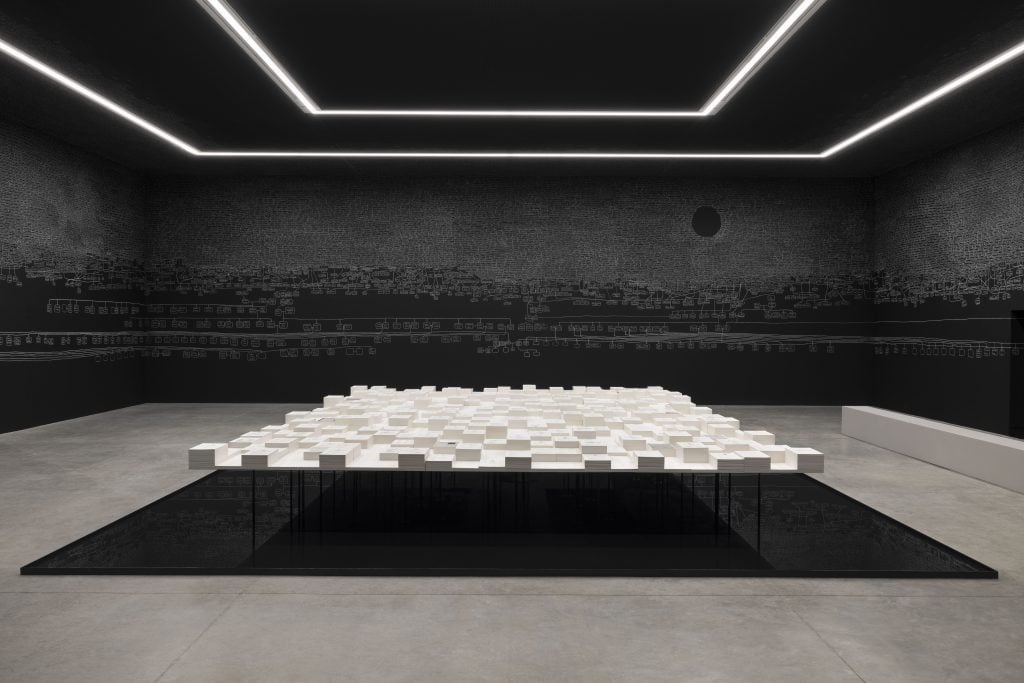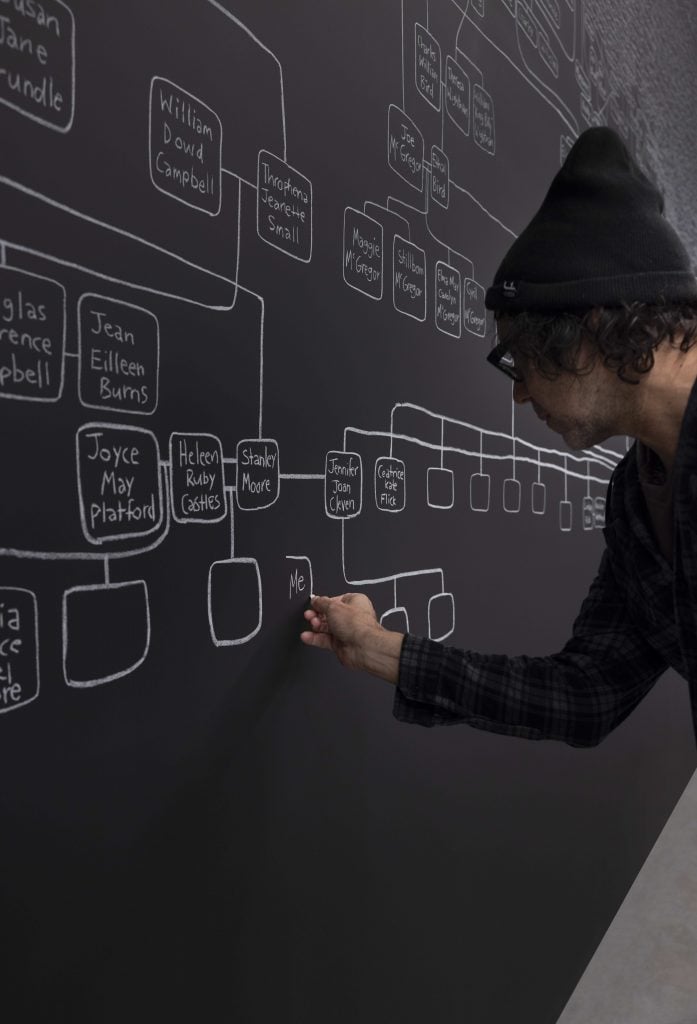Museums & Institutions
Two Museums Jointly Acquire Archie Moore’s Venice Biennale Work
Moore's "quietly powerful" record of his Indigenous family was awarded the prestigious Golden Lion award in April.

Moore's "quietly powerful" record of his Indigenous family was awarded the prestigious Golden Lion award in April.

Jo Lawson-Tancred

Archie Moore’s artwork for the Australia Pavilion at this year’s 60th Venice Biennale has been acquired by the Australia Government for Queensland Art Gallery, which will share it with their acquisition partner Tate in the U.K. In April, kith and kin won the prestigious Golden Lion for best national pavilion, making Moore the first Australian and First Nations artist to do so.
The artist’s installation, described as “quietly powerful” by one of the Golden Lion jurors, includes his own family tree hand-drawn with white chalk on black-painted walls and ceiling. It records more than 2,400 generations across 65,000 years, compiled during years of intensive research. At the center of the room is a moat containing piles of state records that Moore sifted through.
The room, which has the cool, peaceful, and dimly lit atmosphere of a sacred space, also acts a memorial to the legacy of colonialism in Australia. The documents are a record of the high rates of incarceration of First Nations people and how this impacted families.
“Through the unfolding of a single-family tree, Moore’s work kith and kin pushes ancestral memory into the present and immerses audiences into the fullness of Indigenous time,” commented Indigenous scholar Stephen Gilchrist. ”Moving from the personal to the cosmic, it visualizes Indigenous understanding of the interconnectedness of all things and all people and questions what it means to encounter the world on these terms. Honoring the life force of 2,400 generations, this significant shared acquisition amplifies the power of Indigenous presence and politics globally.”

Archie Moore, “kith and kin” (2024), Australia Pavilion at Venice Biennale 2024.
Photographer: Andrea Rossetti. © the artist. Image courtesy of the artist and The
Commercial.
Moore, who was born in the city of Toowoomba in Queensland in 1970, said he became interested in his family tree after his mother suffered a stroke and he feared “losing that archive.”
“I was asking her about people I would see mentioned in archival material,” he recalled, speaking to Artnet News earlier this year. “I was cross-referencing what she said with what was written down in an official document. This made me aware of how good her memory was.”
Moore added that it took him and his team working eight-hour days, six days a week for five weeks to install the artwork. “The writing on the ceiling was the most physically challenging and now I know how Michelangelo felt working on the Sistine Chapel,” he quipped.
Because it is such a large installation, kith and kin has been acquired as a set of artist instructions rather than the physical installation that was debuted at Venice. It can therefore co-exist at both Tate and Queensland Art Gallery without incurring any additional shipping, conservation, or storage costs.
According to a press release announcing the acquisition, the partnership between Queensland Art Gallery and Tate echoes Moore’s own heritage. He is descended from the Kamilario and Bigambul peoples through his mother, while his paternal line can be traced back to his great-great-grandfather William Moore, a 16-year-old British-Scottish boy who was convicted of theft and deported to a penal colony in Australia in the 19th century.
“In [kith and kin‘s] unimaginable endeavour to map a personal genealogy through more than two thousand generations, Moore has summoned up an extraordinary image of human connection through deep time,” commented Queensland Art Gallery’s director Chris Saines CNZM.
The Australia Pavilion was commissioned by Creative Australia and curated by Ellie Buttrose. Tate’s ties with Australian museums have included joint acquisitions made with the Museum of Contemporary Art in Sydney and a collaboration with the National Gallery of Art in Canberra that will bring a Emily Kam Kngwarray retrospective to Tate Modern in 2025.